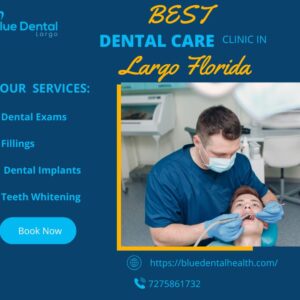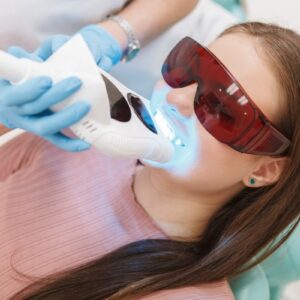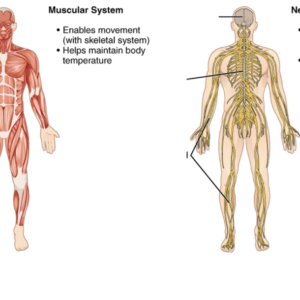Orthodontics plays a crucial role in modern dentistry, helping people achieve healthier and more attractive smiles. Whether it’s overcrowded teeth, misaligned jaws, or bite issues, early diagnosis and professional care can make a significant difference. Understanding the most common orthodontic problems and how they are treated can help patients take timely action to prevent complications later in life. If you’ve ever searched for orthodontic near me or spoken to an orthodontist in St Clair, you’ve probably heard about several of these issues. Let’s dive into the most frequently encountered orthodontic conditions and their treatment options.
1. Crowded Teeth
What is it?
Crowded teeth occur when there isn’t enough space in the mouth for teeth to align properly. This can lead to overlapping, twisted, or crooked teeth.
Treatment:
Treatment typically involves the use of braces or clear aligners to gradually move the teeth into proper alignment. In some cases, tooth extraction may be required to create space. A retainer is often used post-treatment to maintain results.
2. Spacing Issues
What is it?
Spacing problems are the opposite of crowding. They happen when there’s too much space between teeth, often due to missing teeth or natural gaps.
Treatment:
Like crowding, spacing issues can be corrected using traditional braces or clear aligners like Invisalign. Closing the gaps not only improves aesthetics but also prevents food from getting stuck and causing gum issues.
3. Overbite
What is it?
An overbite occurs when the upper front teeth significantly overlap the lower front teeth. While a minor overbite is normal, a deep overbite can cause jaw pain, gum damage, and tooth wear.
Treatment:
Braces are the most common treatment, sometimes combined with elastics or bite plates to help reposition the jaw. Severe cases may require orthognathic (jaw) surgery.
4. Underbite
What is it?
An underbite is when the lower teeth sit in front of the upper teeth. This condition can interfere with chewing and speaking, and can also lead to facial imbalance.
Treatment:
Mild underbites may be corrected with braces or aligners. In more severe cases, especially those involving jaw misalignment, surgery might be necessary to reposition the jaw correctly.
5. Crossbite
What is it?
A crossbite happens when some of the upper teeth sit inside the lower teeth, either at the front or sides of the mouth. This can cause tooth wear, gum issues, and jaw discomfort.
Treatment:
Crossbites can often be corrected using braces, expanders, or clear aligners. Early treatment during childhood is often more effective, but adult cases can still be treated successfully.
6. Open Bite
What is it?
An open bite is when the upper and lower front teeth don’t touch when the mouth is closed, leaving a visible gap. It may be caused by thumb sucking, tongue thrusting, or skeletal issues.
Treatment:
Treatment depends on the cause and severity. Braces, aligners, or appliances like tongue cribs are used in many cases. Severe cases might require jaw surgery.
7. Impacted Teeth
What is it?
Impacted teeth are those that don’t erupt properly into the mouth. Wisdom teeth are the most commonly impacted, but other teeth (like canines) can also be affected.
Treatment:
Treatment typically involves minor oral surgery to expose the impacted tooth, followed by orthodontic treatment to guide the tooth into place. Early detection is key to successful treatment.
8. Jaw Misalignment
What is it?
Misalignment of the jaws can result in noticeable facial asymmetry, bite problems, and even breathing or speech issues.
Treatment:
In children, growth modification appliances may be used to guide jaw development. In adults, corrective jaw surgery in combination with braces may be necessary.
Importance of Early Diagnosis
Early intervention can significantly reduce the complexity and duration of treatment. Children should ideally see an orthodontist by the age of 7, according to the Australian Society of Orthodontists. However, adults can benefit from orthodontic care at any age.
If you’re searching for “orthodontic near me”, especially in the Western Sydney region, consider booking a consultation with a trusted orthodontist in St Clair. A qualified specialist can provide a personalised treatment plan based on your specific needs.
Modern Orthodontic Options
Orthodontic treatments have advanced greatly in recent years. Traditional metal braces remain highly effective, but many patients now opt for less visible options:
- Ceramic Braces: Less noticeable than metal.
- Lingual Braces: Placed behind the teeth.
- Clear Aligners (e.g., Invisalign): Removable, transparent trays that are almost invisible.
Your orthodontist will recommend the most appropriate solution based on the condition of your teeth and lifestyle preferences.
Summary
Orthodontic issues like crowding, spacing, overbites, and jaw misalignment are common but highly treatable. With the help of a skilled orthodontist, patients can achieve both functional improvements and enhanced aesthetics. Whether you’re an adult seeking a straighter smile or a parent concerned about your child’s teeth, early consultation is key. If you’ve been Googling “orthodontic near me”, now is the time to act. Don’t hesitate to visit a qualified orthodontist St Clair who can guide you on the best course of action. Straight teeth are not just about looking good—they’re about feeling good, speaking clearly, and maintaining optimal oral health for years to come.
Your Healthy Smile Dentists
154 Bennett Rd,
St Clair NSW 2759,
Australia
612 9670 6991




